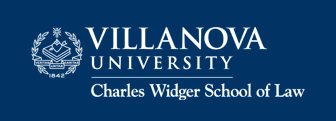A Codified Liabilty Regime to Stimulate Greater Investment in Subpatentable Innovation
Recommended Citation
Ana Santos Rutschman & Jerome H. Reichman,
A Codified Liabilty Regime to Stimulate Greater Investment in Subpatentable Innovation,
57(3)
U.C. Davis Law Review
2027
(2024).
Available at:
https://digitalcommons.law.villanova.edu/facpubs/116
Abstract
The global intellectual property system rests on a distinction between exclusive property rights and free competition. Exclusive rights vary in strength and intensity, but the opposite of protection is almost always free competition. Distinctions of intensity are drawn in terms of the length of protection given to different subject matters plus variable lists of exceptions and limitations to exclusive rights. But the bottom line is that, when protection is not available under the existing system, free competition prevails, and vice-versa (i.e., where there is exclusivity, free competition is deferred for a specified period of time).
This Article departs from a different position. It suggests that this black and-white approach does not work well for subpatentable innovation, i.e., innovation that cannot meet the non-obviousness criteria of patent law but that nonetheless constitutes a novel and useful contribution to existing technical knowledge. The reason is that free competition often overwhelms and limits the incentives to invest in risky subpatentable innovation from the outset because successful innovations obtain no exclusive rights by default, and competitors may dominate in practice once the validity of the innovation becomes an established fact. The very success of any given innovation thus stimulates competitors to enter the market, which threatens to impede the first innovator’s ability to recuperate initial investment costs in a risky venture, not to mention profits.
To address this problem, some countries have enacted sui generis regimes of exclusive property rights, notably in the form of utility model laws. However, this model necessarily evokes the question of either too much or too little protection. It only affords the first innovators an opportunity to recuperate their costs if they meet a relatively high standard of eligibility, thus discouraging the undertaking of such a risk from the outset. Moreover, imitating patents at the subpatentable level raises serious questions of legitimacy in the first place, plus a very real and long-term set of impediments to free competition.
This traditional approach thus ignores a second category of property rights that sounds in liability rules instead of property rights, a distinction first recognized by Guido Calabresi and Douglas Melamed. Recognizing this distinction could in turn open the door to a form of intermediate protection that seeks to address the risk of investment in subpatentable innovation without the social costs of exclusivity. The history of intellectual property suggests that we have reached the outer limits of exclusive intellectual property experiments. Instead, the time has come to try a liability rule where barriers to entry are as undesirable as too much exclusivity. A carefully constructed liability rule could provide an intermediate format for an intermediate subject matter, without impeding the principle of free competition.
ISSN
0197-4564
Disciplines
Intellectual Property Law | Law

